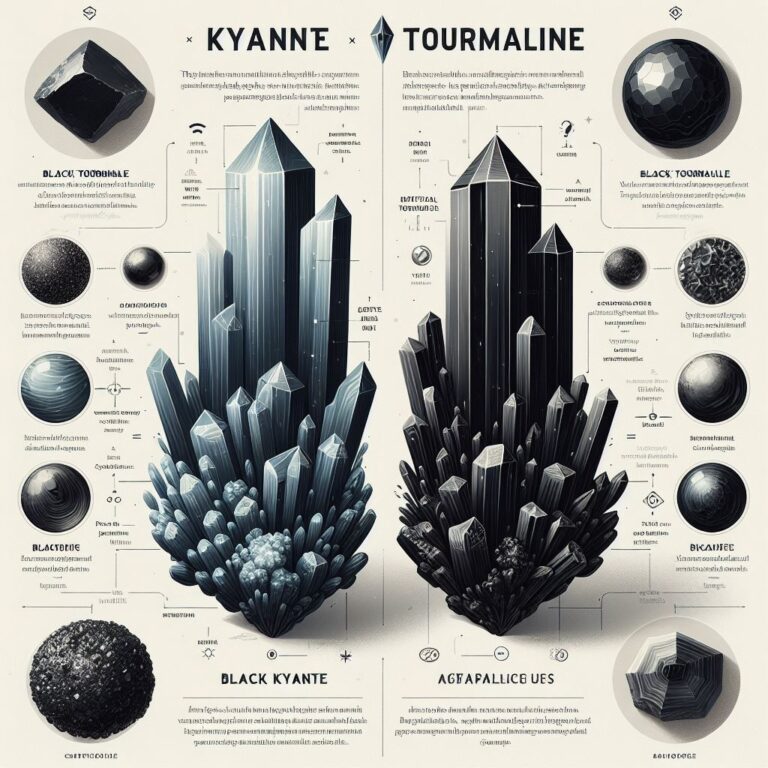
Gemstones, with their kaleidoscopic beauty and mystical allure, have fascinated humanity for centuries. Among the multitude of precious stones, Amethyst, Aquamarine, Opal, and Tanzanite stand out for their unique colors, properties, and cultural significance. In this exploration, we’ll delve into the captivating realms of these gemstones, uncovering their origins, characteristics, lore, and the diverse ways in which they are cherished.
Post Contents
Amethyst: The Royal Purple Crystal
Origins and Geology:
Amethyst, a variety of quartz, is known for its enchanting purple hues. Its name is derived from the Greek word “amethystos,” meaning “not drunken,” as ancient Greeks believed it had the power to prevent intoxication. Amethyst is found in various locations worldwide, including Brazil, Russia, South Korea, Zambia, and the United States.
Physical and Metaphysical Properties:
- Color: Ranges from pale lilac to deep purple.
- Mohs Scale: Amethyst has a hardness of 7 on the Mohs scale, making it suitable for various types of jewelry.
- Metaphysical Properties: Often associated with spiritual and healing properties, Amethyst is believed to enhance intuition, promote sobriety, and offer protection.
Uses:
- Jewelry: Amethyst is a popular choice for rings, necklaces, earrings, and bracelets.
- Spiritual Practices: Widely used in meditation and crystal healing.
Lore and Cultural Significance:
- Ancient Greece: Greeks believed that wearing Amethyst prevented intoxication.
- Christian Symbolism: In Christianity, Amethyst is associated with spiritual wisdom and humility.
Aquamarine: The Gem of Tranquil Waters
Origins and Geology:
Aquamarine, a member of the beryl family, is renowned for its soothing blue-green hues reminiscent of the ocean. Major sources include Brazil, Nigeria, Madagascar, and Pakistan.
Physical and Metaphysical Properties:
- Color: Ranges from pale blue to deep blue-green.
- Mohs Scale: Aquamarine has a hardness of 7.5 to 8, making it a durable gemstone.
- Metaphysical Properties: Linked with calming energies, courage, and clear communication.
Uses:
- Jewelry: Aquamarine is a popular choice for rings, earrings, and necklaces.
- Healing Practices: Some believe Aquamarine promotes emotional balance and reduces stress.
Lore and Cultural Significance:
- Ancient Sailors: Believed to bring good luck and protection to sailors.
- Roman Mythology: Associated with Neptune, the god of the sea.
Opal: The Gem of Shifting Colors
Origins and Geology:
Opal is known for its iridescence and play of colors. Australia is a primary source of precious opals, although it is also found in countries like Mexico, Brazil, and Ethiopia.
Physical and Metaphysical Properties:
- Color: Exhibits a spectrum of colors, often in a play-of-color effect.
- Mohs Scale: Opal is relatively soft with a hardness of 5.5 to 6.5.
- Metaphysical Properties: Seen as a stone of inspiration and creativity, Opal is believed to enhance imagination.
Uses:
- Jewelry: Opals are used in various jewelry forms, including rings, earrings, and pendants.
- Artistic Endeavors: Opals are sometimes used in artistic and creative projects.
Lore and Cultural Significance:
- Aboriginal Australian Folklore: Opals are believed to be the remnants of a rainbow that touched the Earth.
- Middle Ages: Opals were considered a symbol of hope and purity.
Tanzanite: The Lavender-Blue Jewel of Tanzania
Origins and Geology:
Tanzanite is a relatively recent discovery, found mainly in Tanzania near Mount Kilimanjaro. It is a variety of the mineral zoisite.
Physical and Metaphysical Properties:
- Color: Exhibits a unique lavender-blue hue.
- Mohs Scale: Tanzanite has a hardness of 6.5 to 7.
- Metaphysical Properties: Associated with spiritual awareness and transformation, Tanzanite is believed to open the third eye and throat chakras.
Uses:
- Jewelry: Tanzanite is often used in rings, earrings, and pendants.
- Spiritual Practices: Some believe Tanzanite aids in spiritual growth and inner exploration.
Lore and Cultural Significance:
- Discovered in the 1960s: Tanzanite gained popularity after its discovery in Tanzania.
- Maasai Legend: Some legends suggest that Tanzanite is formed from the tears of the Maasai tribe.
Comparative Analysis: Amethyst vs. Aquamarine vs. Opal vs. Tanzanite
Color:
- Amethyst: Shades of purple.
- Aquamarine: Blue-green hues.
- Opal: Play of colors.
- Tanzanite: Lavender-blue.
Hardness:
- Amethyst: 7 on the Mohs scale.
- Aquamarine: 7.5 to 8 on the Mohs scale.
- Opal: 5.5 to 6.5 on the Mohs scale.
- Tanzanite: 6.5 to 7 on the Mohs scale.
Metaphysical Associations:
- Amethyst: Spiritual growth and protection.
- Aquamarine: Calming energies and clear communication.
- Opal: Inspiration and creativity.
- Tanzanite: Spiritual awareness and transformation.
Cultural Significance:
- Amethyst: Ancient Greek and Christian symbolism.
- Aquamarine: Linked to ancient sailors and Roman mythology.
- Opal: Aboriginal Australian folklore and Middle Ages symbolism.
- Tanzanite: Discovery in the 1960s and Maasai legend.
Conclusion: Selecting the Gemstone that Speaks to You
In the vast tapestry of gemstones, the choice between Amethyst, Aquamarine, Opal, and Tanzanite is a deeply personal one. Each gemstone carries its own unique history, properties, and cultural lore. Whether you are drawn to the regal purple of Amethyst, the tranquil blues of Aquamarine, the iridescent play of colors in Opal, or the distinctive lavender-blue of Tanzanite, these gems serve not only as adornments but as reflections of individual taste, spirituality, and cultural connections. As you explore the realm of these precious stones, allow your heart and instincts to guide you toward the gem that resonates most with your essence and style.






